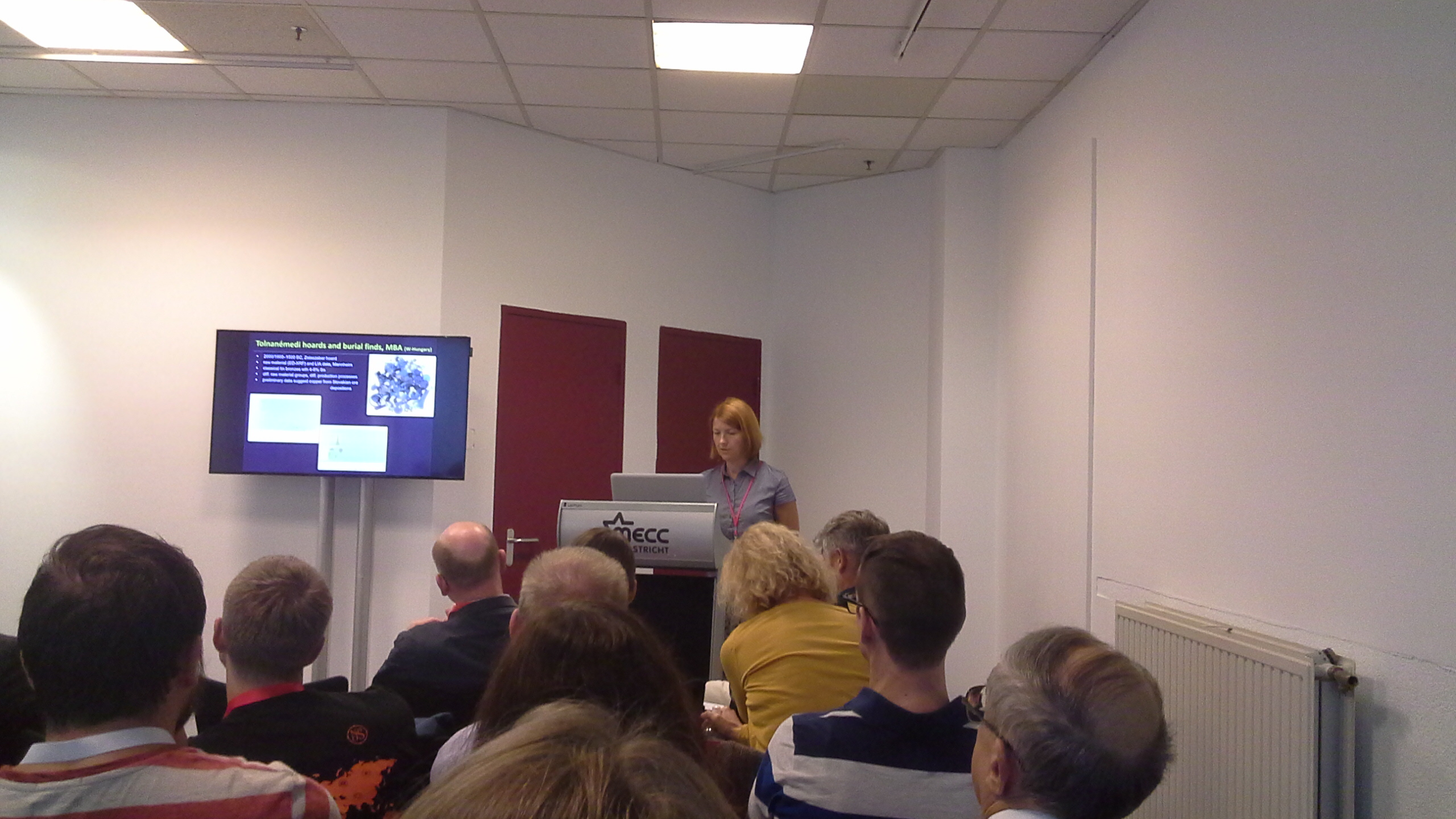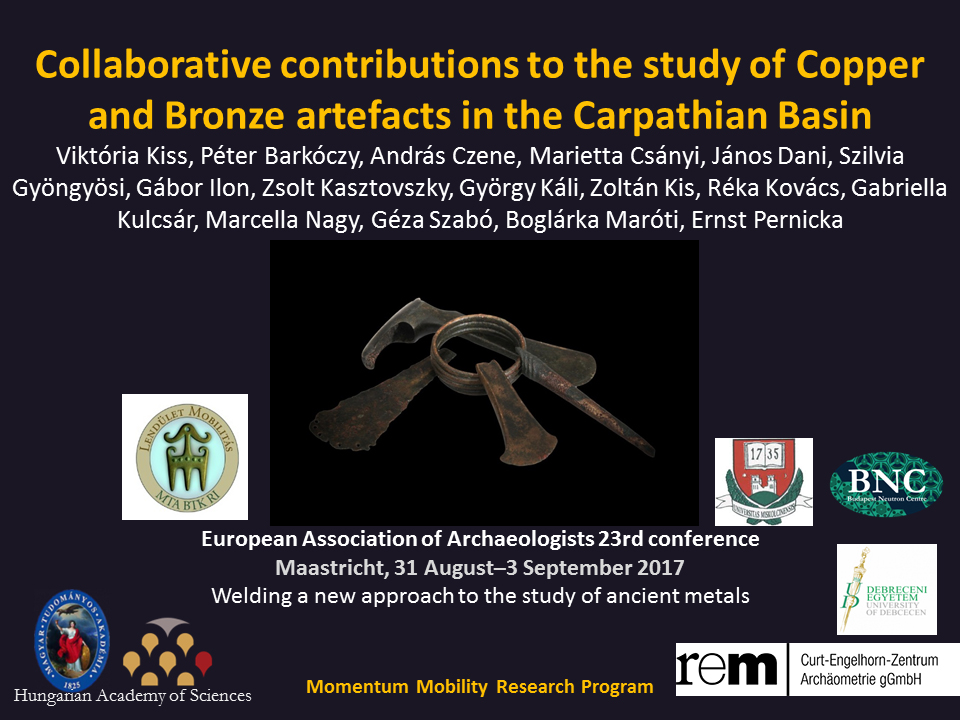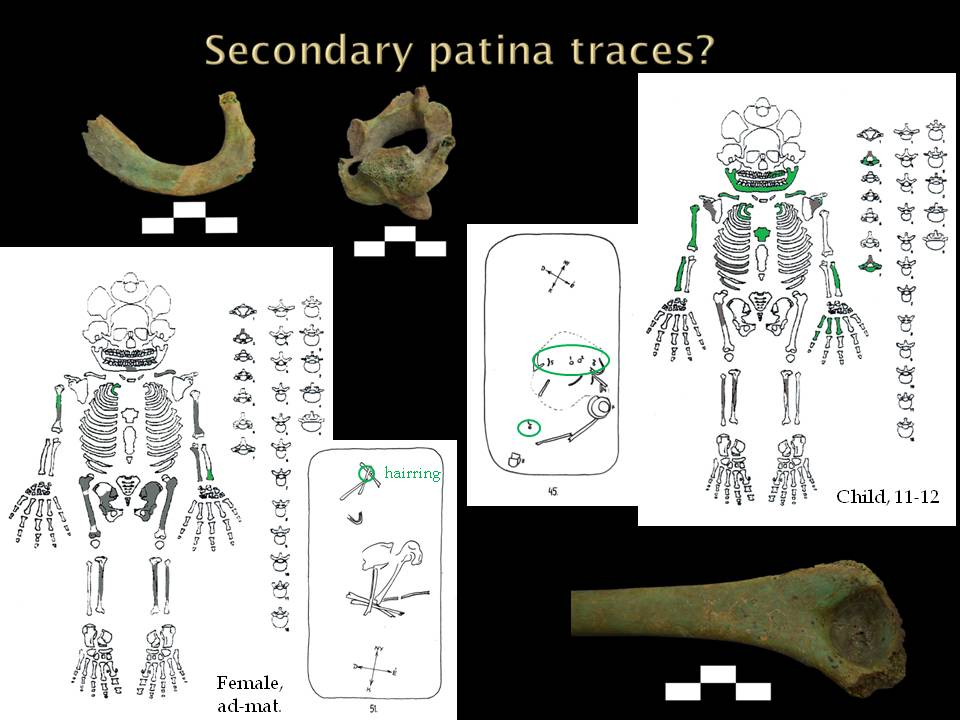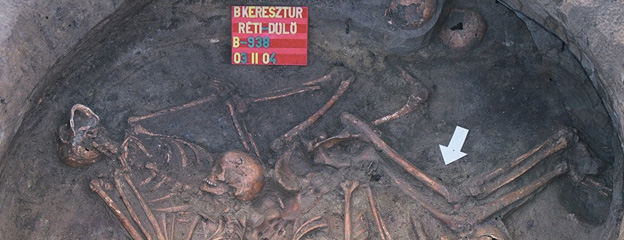EAA 2017 – Our researchers at the grand meeting of European archaeologists
The 23rd Annual Meeting of the European Association of Archaeologists took place between 30 August and 2 September 2017 in Maastricht, Netherlands. The 25th anniversary of signing the Maastricht Treaty (Treaty on European Union) in 1992 played an important role in choosing the location of the conference. Maastricht is a significant strategic point that is also reflected by the oldest built legacy of the city (and the entire Netherlands): the Sint Servaasbrug (St. Servatius Bridge) over the River Maas (Meuse) with Roman Age antecedents. The organizers of the conference chose this bridge for the logo of the conference. By the motto (Building Bridges), they also drew attention to the fact that archeology plays a bridge-like strategic role as they connect remote disciplines by using multidisciplinary methods. In addition, organizers have encouraged the participants to take over another important role, namely to build up the links between heritage conservation and society, as well as to share the scientific results with the public (see the greetings of the organizers; “Do cross the bridge and present your research to the public”).

At the grand international conference, 175 sessions included about 1800 lectures. The latest results of our research team were presented in three speeches.
Viktória Kiss and her co-authors’ lecture titled Collaborative Contributions to the Study of Copper and Bronze in the Carpathian Basin took place in the session ‘Welding a new approach to the study of ancient metals’ (session organizers: M. Pearce and T. Stöllner). The session focused on presenting successful archeometallurgical case studies with the participation of archaeologists, physicists and material scientists. Our lecture presented recent results of both non-destructive and destructive metal testing, carried out in cooperation with the Budapest Neutron Centre, the University of Miskolc and the University of Debrecen, as well as the results of lead-isotopic analyses prepared in the CEZA Laboratory in Mannheim. The 22 new lead-isotope determinations are also significant because only a few similar analyses were carried out so far (only 9 objects were tested from two Bronze Age sites in Hungary). According to the new results, the raw material of the recently investigated metal objects dated between 2800 and 1600 BC most probably derived from the area of the present-day Slovak Ore Mountains.


With their presentation Analysis of secondary mortuary practices in the Early Bronze Age inhumation burials from North-western Hungary, Eszter Melis and Tamás Hajdu joined the session ‘Burials as complex features: Exploring new approaches to death and burial in archeology’ (session organizers: F. Fahlander, A. Klevnäs and K. Rebay-Salibury). The lecture analyzed the problem of Early and Middle Bronze Age “grave robbery” and possible consecutive burials by analyzing Western Transdanubian inhumation graves. Among others, anthropological materials kept in the Department of Anthropology, Hungarian Natural History Museum were processed in order to locate traces of bronze patina (green discoloration caused by bronze objects) on the bones. By this, they tried to reconstruct the amount of bronze artefacts initially buried into the graves and to reinterpret the practice of reopening of the tombs.

The lecture of Judit Pásztókai-Szeőke, Ildikó Szathmári, Gabriella Kulcsár, Péter Polgár and Viktória Kiss titled Pottery, Plants and Textiles Intertwined. Textile Imprints and Tools from the Middle Bronze Age Tell Settlement of Füzesabony-Öregdomb (Hungary) took place in the session “Plants as fiber resources. Approaches from the Science and Arts Perspectives” (session organizers: S. Karg, O. Brinkkemper and S Harris). The authors presented textile making techniques reconstructed on the basis of ceramic fragments with textile imprints from the Bronze Age tell settlement of Füzesabony. The studies have drawn attention to the importance of textiles made from alternative materials (flax and hemp, including nettles, phloem and other plant fibers), which were not only used in prehistoric times, but later, even up to modern times throughout Europe.









